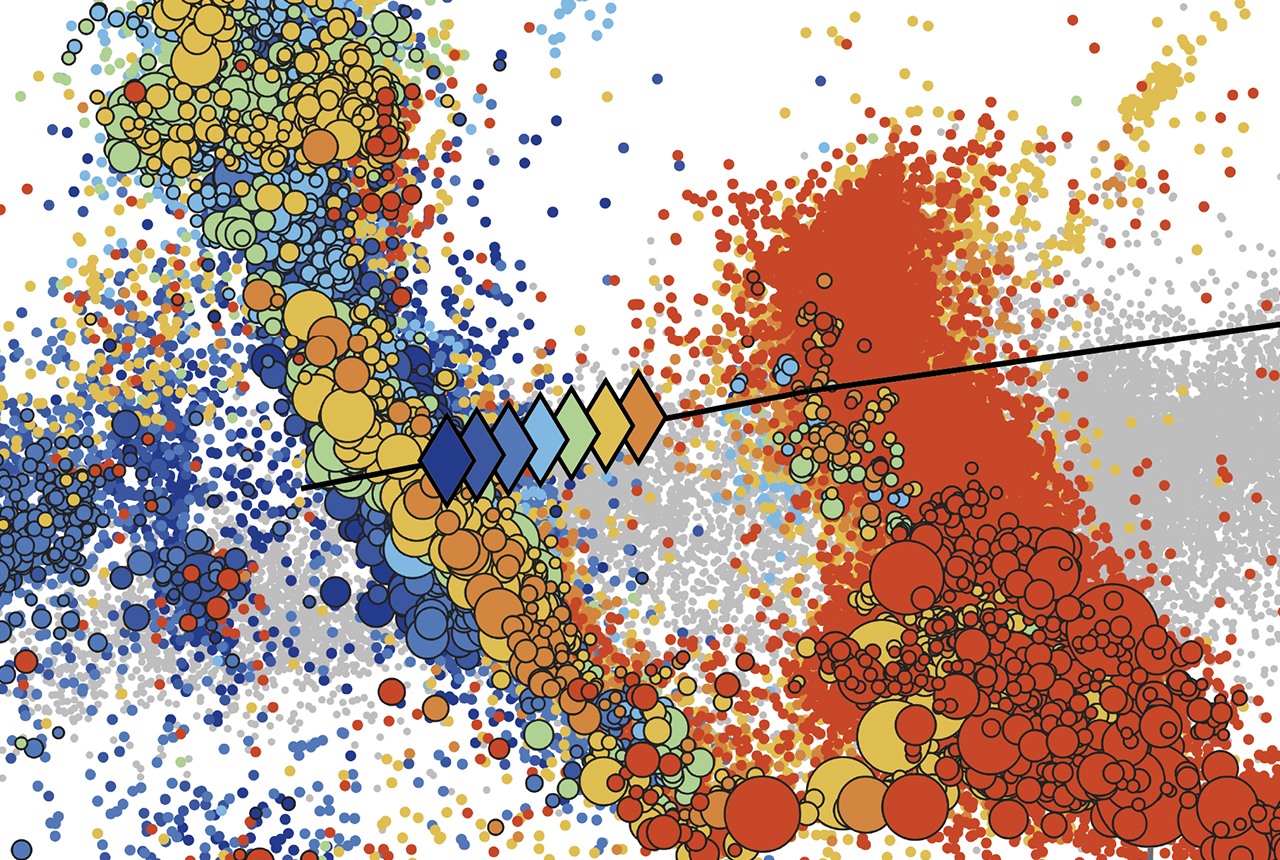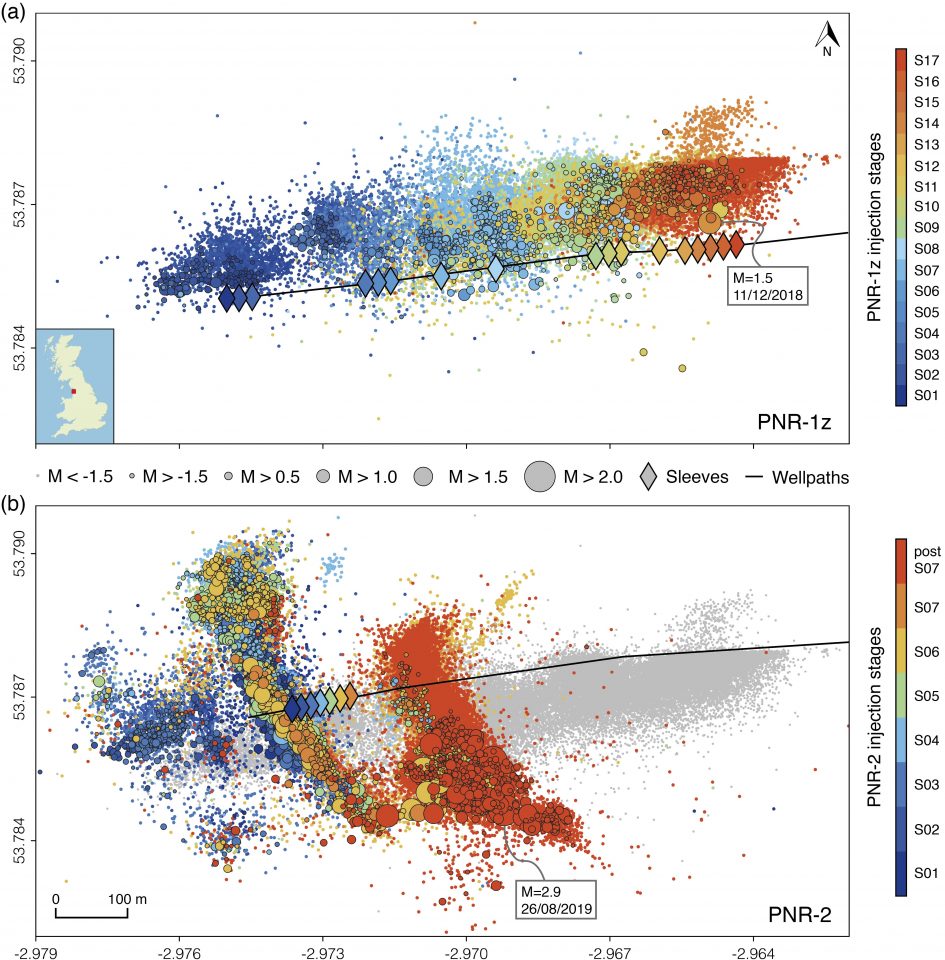Scientists test a new model to understand and forecast seismicity induced by hydraulic fracturing operations
Encouraging new research could bring scientists a step closer to being able to forecast earthquakes induced by human activity.
02/07/2021 By BGS Press
Scientists have been testing the extent to which complex statistical models can be used to forecast seismic response during and after unconventional shale gas development — important work that could enable global operators around the world to better understand the processes that lead to induced seismicity.
Joint research by BGS and the University of Bristol has set out to explore the relationship between induced seismicity and operational parameters such as fluid injection rates and injected volumes, which are both key to understanding induced seismic processes in hydraulic fracturing environments.
They were commissioned by the Oil & Gas Authority (OGA) to independently undertake the research using data taken from microearthquakes observed during and after hydraulic fracturing in 2018 and 2019 at its Preston New Road (PNR) shale gas site near Blackpool, UK.
Using the PNR data, the team has been able investigate the performance of a well-established statistical model, known as the epidemic-type aftershock sequence (ETAS), to see how well it can help them produce real-time forecasts of variable induced seismic rates and magnitude distributions during and after hydraulic fracturing.
The model treats seismicity in a similar way to a virus spreading during an epidemic, in that each earthquake can trigger offspring events, generally called ‘aftershocks’, that can potentially be even larger in magnitude than the triggering event. It also considers that more earthquakes, called ‘background’ events, can occur independently of others.
According to scientists, the ETAS model is commonly used to describe natural seismicity. Although this popular approach has previously been tested under different fluid-induced seismicity scenarios, it has never been used in hydraulic fracturing scenarios before.
Because ETAS was developed for slow loading rate tectonic activity, in order for the researchers to account for seismicity directly caused by pressurised fluid, they tested a modified ETAS version where the background earthquake rates are proportional to injection rates.
Capturing the Earth’s complex range of seismic response to subsurface fluid injection is inherently difficult and this is the first time that scientists have been able to test such a model using hydraulic fracturing data. The model has the potential to be applied globally in other environmentally important settings, such as enhanced geothermal energy systems and underground storage.

Map view of earthquakes recorded during hydraulic fracturing at the Preston New Road unconventional shale gas site. Events are color-coded by the associated injection stage and their size scales with magnitude. (a) Seismicity between 15 October and 17 December 2018 during and after injection at the PNR-1z well. (b) Seismicity between 15 August and 2 October 2019 during and after injection at the PNR-2 well; grey dots indicate the epicenters of events occurred during operations at PNR-1z. The black lines represent the surface projection of the two wellpaths. Diamonds illustrate the position of the main sleeves worked during the operations at the two wells and are colored by the corresponding injection stages. BGS © UKRI
The relationship between operational parameters and the seismic response to hydraulic fracturing is complicated but one that we need to understand in order to develop robust forecasts of human-induced earthquakes.
The PNR microseismic datasets presented a unique opportunity to develop and evaluate statistical forecasting models of hydraulic fracturing-induced seismicity. We have used them to expand on previous applications of the ETAS model by using a much richer dataset and aiming at forecasting induced earthquake rates from a much broader magnitude range, assessing carefully how the forecast performance changes under different modelling assumptions and parameterisations.
Dr Simone Mancini, BGS postdoctoral researcher based at the Lyell Centre, Edinburgh, led the research.
Mancini explains:
What we initially observed was that, despite a variability in the relationship between earthquake count and injected volume, increased seismicity rates tended to be generally associated with greater volumes.
Motivated by this finding, we modified the classic ETAS model and found that it provides better earthquake rate forecasts than the standard version commonly applied in cases of natural seismicity. In particular, the modified injection-rate driven ETAS model can capture high earthquake rates due to injection periods. This is based on the assumption that the number of background earthquakes and injection rates are correlated.
Mancini adds:
Although this is preliminary research, with further testing we are confident this model could provide valuable information for operators, regulators, residents and other stakeholders in hydraulic fracturing environments, as well as the future development of deep geothermal power plants and energy storage.
- The full paper can be accessed in Seismological Research Letters, Geoscience World
- The original datasets from the Oil & Gas Authority are publicly available
- View the datasets applicable to this research in the National Geoscience Data Centre (NGDC): Homogenised catalogues of microseismicity and pumping data from the PNR-1z and PNR-2 injection wells
Hydraulic fracturing operations at Preston New Road occurred between October and December 2018 (PNR-1z well) and August 2019 (PNR-2 well). The wells ran through the natural gas-bearing Carboniferous formation of the Lower Bowland Shale.
- The largest event at PNR-1z occurred on 11 December 2018 with a magnitude of 1.5; the main event at PNR-2 was a magnitude 2.9 on 26 August 2019.
Visit the BGS shale gas research pages which inclmore information about shale gas in the UK.




